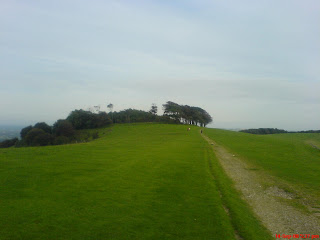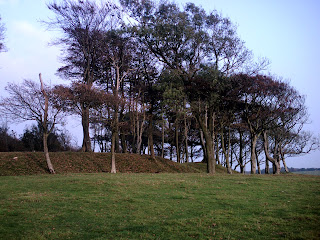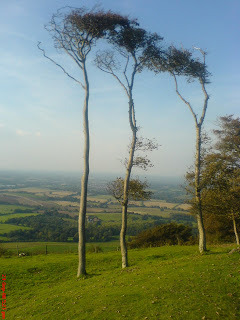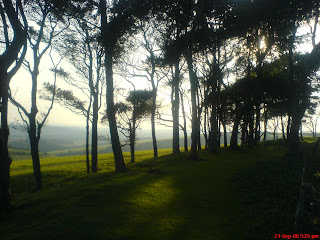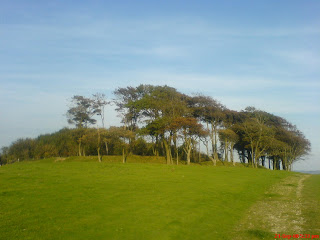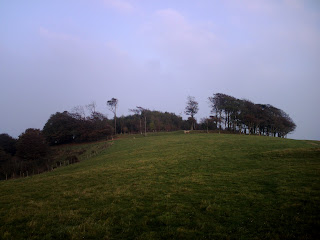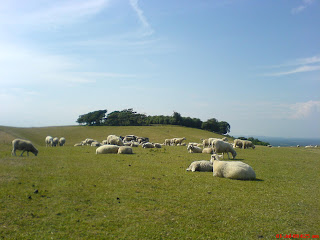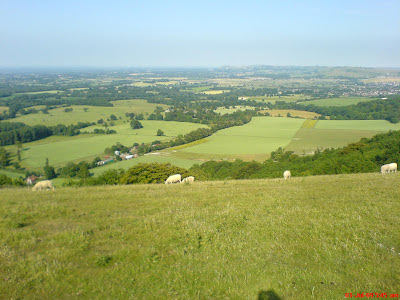Scratch-card holiday, Paris
I said goodbye to my new found friends of 3 and a half days on the ‘Paris run’, stepped out of the coach and shook parting hands with the driver and his mate, completely forgetting that my sports bag was in the baggage hold. ‘Do you have a bag?’, asked one of them quizzically, and that saved the day. I left with some relief, knowing that my credibility had been saved and my acquaintances left on board would not be laughing like drains all the way up to Manchester at my forgetfulness.
Ever wondered whether those scratch-card prizes are worth it or just a big con? Well at the cost of about £6 for the telephone call I decided to find out what I’d won, as potential prizes seemed quite attractive. A trip to Paris was duly awarded and I was sent a letter giving me a choice of dates on which to travel. First time round I couldn’t make any of the available times. I wrote and told them and was sent another letter with another set of dates. Thinking this time that I mustn’t string out any decision, I ticked an August 2004 date and waited for further information. Despite some further confusion over dates, not of my making, a confirmed itinerary was finally established.
I was given a time to meet the coach at Dover, and so at midday on August 13
th joined a party consisting of ‘I hadn’t a clue who.’ A big, bright and breezy Belgian girl by the name of Gisella came from the coach to meet me and do the formalities, then I ventured on board to meet my new acquaintances. Like a good boy I looked for my exact seat number despite the fact that the coach was half empty, scrutinising the seats in the back of the vehicle, until a guy with head buried in the newspaper told me not to bother as there was plenty of space. The back of the coach seemed to be dominated by blokes, although overall there was a good mix of men and women, and the odd family. So this was it, off to Paris, with a completely alien group of people, and what’s more, I would be sharing a room with one of them, a man of course, as this was not a ‘discover the opposite sex by sharing a bedroom’ tour. This is one of the holiday catches; if you want a free holiday, you have to share a room with someone. To guarantee a single room, a supplement must be paid, and that is not of course a free holiday. Naturally this entails a risk, as you could find yourself sharing with an axe wielding psychotic madman, a socially inept personage who breaks wind and grinds his teeth throughout the night, as well as snores, or even a fundamentalist right wing Republican from South Dakota. Shock horror! Or you might even end up with someone normal, it’s a risk some are prepared to take.
As it happened, they turned out to be a very pleasant bunch, albeit with one or two characters. Taking the ferry over to Calais was the chance to get to get to know folks a little better, and I sat with 3 of the ‘back of the coach crowd’ to weigh up what we were in for. All were middle aged (like me!), Jack, a plump, friendly and intelligent character who seemed to be continually working on another roll up; Bernard, a retired single man who had been a Conservative counsellor in his home city of Oxford. Then there was Michael, a pony tailed, rather vulnerable looking fellow with a gentle demeanour, who insisted on wearing 3 shirts and a jacket on top, and turned up jeans and 1960s plimsolls down below, every single day of the holiday, regardless of the weather. He must have been wearing his own air-conditioning unit under that lot!
A stop at Calais at a wines and spirits warehouse gave folk the chance to load up with alcohol, then it was onwards to Paris to arrive at the hotel at about 10pm. The odd stop at a bland service station was interspersed with Gisella's’s commentary on the coach about the amazing excursions available to us over the next three days, at extra cost of course. The holiday ceases to be free once you succumb to the temptation of an excursion! I determined to do my own thing as I was a seasoned independent traveller and knew I could have a far better time discovering things for myself rather than being dragged round on and off a bus all day. This seemed to be the policy of most of the back of the bus crowd. Gisella made her way down the coach to take bookings for the excursions, and to return £50 deposits made by us originally. A vague feeling of guilt at not wanting to part with any more money was mixed with an adamant attitude that there was no obligation to do so. I resolved only to buy the excursion to Disney-world as the coach would get me there and back conveniently, and once I was in, I was free to make my own decisions. Meanwhile, the journey was a further opportunity to bond with the others.
In negotiating the Paris suburbs we got lost in the environs of Orly Airport, but this temporary diversion only delayed us by the odd quarter of an hour. We arrived at the hotel, a concrete block adjacent to a main auto route, and waited on the coach while Gisella sorted out the preliminaries. She had done her room allocations, no doubt on the basis of observing the conversations and groupings developing over the journey. So I ended up with Bernard, who’d I had sat right in front of; it had been the natural thing to talk to him to while away the motorway hours.
The next 3 days passed very pleasurably; the first day I hit the city together with Bernard and visited the famous cemetery to the east of the centre. A mate had mentioned this to me just before I left and Bernard was keen to find the tomb of a famous personage of the 19
th century connected with the military whose name I can’t recall. I had the pleasure of helping him find the very tomb in the maze of avenues, walkways and alleys dipping in and out of the graves, then made my goodbyes, did my own tour taking in Jim Morrison, Oscar Wilde and the victims of the Paris Commune, and returned by metro to the centre of Paris. Bernard was happy to take my copy of the cemetery map before the end of the week. That’s why I can’t tell you exactly who he was looking for in the cemetery!
My first day also took in the Eiffel Tower, on top of which I found myself at almost Midnight together with half of the grockles in the world out rampaging that August, including Mr and Mrs USA and family who I got into jolly conversation with. This was after queueing in the queue waiting to go down for half an hour when I wanted to go up! Having enjoyed the fantastic velvet carpet vistas from the top, I ventured ground-wards. The lateness of the hour meant a nightmare journey home on the metro, as little did I know they had closed a section of line between me and home. This meant catching a second train, then a bus, to pick up the line again further down route. Then I caught the wrong third train that went to the right at the crucial subterranean junction instead of left. Realising my mistake I immediately alighted at the next station. Shock horror! There was no-one around, and a female French voice over the tannoy spoke into the emptiness. My French is passable but not good enough to interpret her words, but I’m sure she said: ‘That was the last train tonight out of the centre and there are no more trains back into the centre (you silly little Englishman).’ So I was stranded in Paris suburbia without a clue of how to get to the hotel. I wearily climbed the steps from the platform and scrutinised the map on the wall. As I did so a nice young man, obviously an employee, tried to help me find the way. I showed him the hotel brochure that sported a little map. His encouraging demeanour seemed to evaporate as he wrestled with the map, and eventually he was able to give me no more than a vague indication of which way to go. It was like watching a large bright balloon deflate into a pathetic floppy ribbon. I started walking, and spotted a girl sitting at a bus stop. Perhaps she would know the way. I spoke to her but she could not enlighten me; the overall conclusion was there was nothing for it but to get a taxi.
It was a late return, but Bernard had been very gracious; he was long committed to the bosom of the night but had kindly left the light on for my arrival. He was perfectly gracious the next day about my exploits, as befits the English gentleman abroad.
The next day I struck out for Versailles. A group of us caught the bus to Porte d’Italie, then the Metro towards the centre. I split with the others eventually and headed westwards to the Eiffel Tower, where I switched lines for the Versailles train. The new line was obviously a main line headed out of the capital, with trains to match. I was engaged in conversation by a pretty Italian girl who wanted directions; she was heading for Versailles as well, and we boarded the train together. It promised to be a good day, as she was very friendly, and female company around the Palais de Louis would be extremely welcome. Unfortunately, my ticket only covered certain zones, and I had to get off and buy a further ticket at the end of the zone, then join another train to Versailles; so it was goodbye to Senorita!
Versailles was not a disappointment; never before had I seen such a vast and magnificent pile, and if it had been frequented by pompous and uncaring aristocrats, in the past I could see why France suffered a revolution. I foraged in the town centre for a picnic lunch, then did the tour of the King’s Chambers. After this I found a spot in the gardens to consume my lunch, watching the ample flow of visitors go by, sometimes in horse and trap. Later I returned to do the other tour, and stuffed to the gunnels with sights of one musty and magnificent apartment after another, I was disgorged again into the gardens to enjoy the leisurely wind down of the day.
The gardens at Versailles I have not seen the like of anywhere in England, particularly the vast and lengthy strip of lake that strikes out symmetrically from the back of the Palace, like the trail of an expensive wedding gown. Arrayed around the lake-land are intermingling sets of gardens, woodland and open spaces, with further outlying residences, notably the home of Napoleon, and then the mock rural farm cottages and lake where Marie Antoinette supposedly pretended to be a farmer. I managed to breeze through Napoleon’s quarters just before closing time, before exploring the open spaces.
Soon the feeling struck me that the evening would fast disappear if I did not fairly swiftly return to the centre of Paris with a view to having an evening meal. So I retraced my route back to the majestic entrance of Versailles, and after one last admiring gaze, I strode out for the railway station. It was not long before I was sitting on a Montparnasse bound double decker train wending its way through the Paris suburbs. When we got to the station, I was unsure of the validity of my ticket at this destination vis a vis the metro, so gave the ticket barrier the slip by using stairs down to a lower level, duly finding myself in the entrance concourse. Montparnasse is another one of those evocative Paris railway termini that promises escape to the peasant filled rural idylls so celebrated in French films, to the Mediterranean delights of Provence, or even the start of a trans European journey of discovery. I observed the TGVs lined up and ready to go, only this time the destinations hugged the dune filled and pine forested Atlantic seaboard – Brest, Rouen, La Rochelle and Bordeaux. Alas, it would have to wait for another day!
I duly left the station concourse and headed out into the plaza surrounding the entrance; ahead of you is the Tower Montparnesse, a magnificent tower block with super fast lifts, brilliant views and a chiseled black marble look. I was intent on finding somewhere to eat before getting caught out on late metros like the other night! As I passed the tower to my left I espied one of the younger women from our trip obviously waiting for someone. What were the chances of that happening? I greeted her and as we shared notes on our respective days her brother arrived with his Mauritian wife, an attractive ebony lady. It was now my good fortune to be invited to join them for a drink just over the road. A convivial evening was spent over a jar sharing our experiences; the brother proved to be a teacher in Paris, so we had quite a bit in common. Since I still wanted to eat I broke up with them to find a late pizza or suchlike. Thankfully there were no problems getting home that night.
The last full day was spent at Disneyworld where I found myself sharing the delights of this childrens’ paradise with the very strangely dressed man with pony tail (tree shirts and a jacket, turned up jeans and plimsolls) and an older coloured man from ‘up north.’ This was a most incongruous match and reminded me of the time when I arrived at church in my Honda Prelude sports car and disgorged 2 elderly ladies, one being my mother. Nevertheless a good time was had by all, starting with a circle of the Magic Kingdom on the railway. This was followed by a foray onto Space mountain, which proved every bit as exciting as the Florida Disneyworld equivalent of my USA trip 20 years previously, and of course a trip to the castle, a bit of a folly stuck in the centre of the theme park like a wedding cake on the banqueting table amidst all the other delights. One of the highlights had to be Pirates of the Caribbean, a wonderful waterborne journey through most entertaining scenes from adventures on the high seas and the pillaging of coastal communities, with the usual displays of drunken excess. As the day wore on our friend with the pony tail split the scene to do his own thing, and myself and the jovial coloured Mancunian continued to enjoy the various rides on offer, such as the backward going and upside down roller coaster thriller that was closed for part of the afternoon because of a little rain.
A thoroughly entertaining day ended with our retracing steps to the coach park to commence the journey home. It is worth noting that the euro star has a station at Disneyworld; a reasonable day out from Ashford or Waterloo return for those who want to entertain the youngsters.
Despite a late night ferry return to the UK, followed by an even later car journey home into the small hours, a thoroughly worthwhile expedition had been accomplished, with very pleasant companions. Three cheers for a scratchcard holiday!
(Real life names have been changed)









































